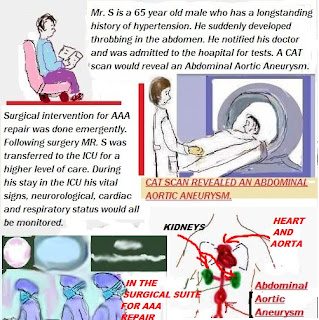CHEST PAIN AND THE EKG
Mrs. K has an overly demanding boss. Not only is she experiencing
chest pain related to stress, but her heart is having PVC's ( premature
ventricular contractions), as reflected in the EKG.
Chest pain may occur anywhere and anytime, even at rest.
It may be related to stress or actual damage to the heart.
A patient having a heart attack, usually complains of chest
pain.
Helpful hints:
It is important to do a pain assessment on a
scale of 1-10 and document findings.
Chest pain may be sharp, severe and stabbing.
It may also feel like pressure in the chest or
Like a pair of hands squeezing the chest.
It is also of note, to ask the patient to describe
the character and duration of the pain. Always
remember to document all interventions.
Follow your Institution's policies, procedures
and MD orders for chest pain.
Watch the video: Do you know your heart
Simple EKG interpretation:
The EKG (Electrocardiogram) is a noninvasive,
simple diagnostic test. It is a reflection of
the electrical conduction system of the heart.
It consists of 12 leads.
A myocardial infarction ( heart attack) can be
detected on the EKG.
The SA (Sinoatrial node) is the pacemaker of
the heart. It is located in the right atrium.This
can best be described as a light switch being
turned on.
When the SA node fires, both atria contract
simultaneously.
When the AV node ( Atrioventricular node) fires,
both ventricles contract simultaneously.
QRS waves = ventricular contraction
T wave = resting time before the next contraction
Learn more about this topic by watching the video:





Comments
Post a Comment